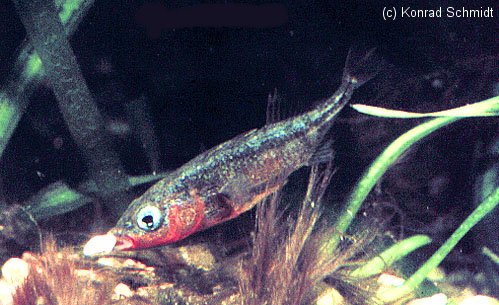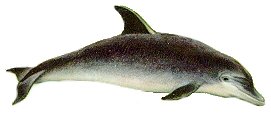Sticklebacks

Gasterosteus aculeatus
( Threespine, right )
Apeltes quadracus
( Fourspine, below )
Size:
to 4" (threespine)
to 2" (fourspine)

Habitat:
Weedy shore waters, occasionally at sea or even in freshwater.
Notes:
Sticklebacks are related to Pipefish and Seahorses. Three- and four-spined varieties are common in our area. A Ninespine variety is also possible.


